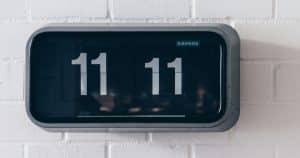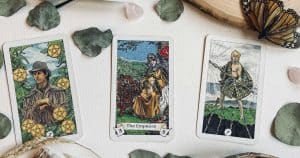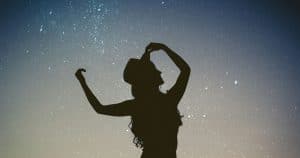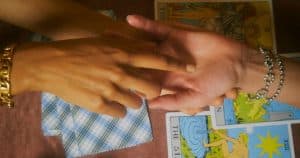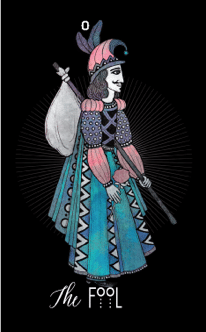
Vedic Astrology is a centuries-old method of computing one’s fortune and fate using the positions of the planets among the stars as indicators of your personality and traits. Vedic astrology is a tradition of the Indian subcontinent and has nearly a billion adherents. The main difference between Vedic Astrology and the astrological traditions of the West are that Vedic Astrology follows the precession of certain fixed stars. These markers matched just fine when ancient Greeks introduced their science to Hindu intellectuals and priests. But as our solar system slowly drifted along within the galaxy, so too did the fixed stars
The beginning of the sign Aries is the beginning of the Astrological new year in both traditions. Western astrologers modified their horoscopes to maintain a relationship between the beginning of the annual horoscope and the Spring Equinox. Vedic astrologers maintained the Sun’s relationship to certain far-off stars to signal the beginning of the astrological New Year. Over 2,000 years later we see Vedic astrological signs beginning 22 days later than in Western astrology. And as time goes on that will only grow further. Whatever zodiac sign you belong to in the west is not likely the one you belong to in Vedic Astrology. If you are a Libra but were born before October 13, in Vedic astrology you are a Virgo.
Historically, measuring the location of the Moon has always been a difficult task for astrologers worldwide. The position of the Moon affects the tides and for centuries was critical for sailing. The Moon also controls our emotional nature. In Western astrology, the Moon is measured relative to its location in one of the twelve zodiac signs. In Vedic astrology, the Moon’s journey through the horoscope is measured in 27 Lunar Mansions. The Lunar Mansions are the same length, each measures almost a 24-hour journey – adding up to a one month cycle. Each Lunar Mansion has complex psychological attributes attached to it and each predicts certain fates. The importance of the Moon in Vedic astrology supersedes that of the Sun signs in popular Western astrology.
The similarities also reveal subtle differences. Translations for the first five signs of the zodiac are the same in both traditions: Ram, Bull, Twins, Crab, Lion. But whereas the ancient Greeks referred to Virgo as “Virgin,” in the Vedic traditions, this sign is known as Kanyā – translating literally as “girl.” Libra translates as “balance” in both traditions, as does Scorpio (Scorpion), but Sagittarius in the west comes from the Greek word for “archer” – in Vedic astrology it is the inanimate “bow” – still representing the archer, but not carrying the human form that implies the seeker, the archetype of the Sagittarian personality. The biggest difference in translation comes with Capricorn, the horned goat in Greek translation. In Vedic Astrology this sign is Makara, translating as “Sea Monster.” Aquarius has always been the Water bearer, a human symbol of providing sustenance for many through service and leadership. In Vedic astrology the sign is called Kumbha, “pitcher” again referring to the inanimate object associated with the sign but ridding it of any human elements. The zodiac’s final sign, Pisces, remains “Fish” in both traditions.
In Western astrology there is a house system dividing up each horoscope and describing each individual. In Vedic astrology this same computation exists and is known as the Bhāva. The planets are called Graha. The Sun is called Surya and rules the soul and represents one’s inner king. The First House is called Lagna and represents the purpose of one’s life. To have the Sun in the First House would represent an individual who succeeds at life on his or her own terms.
With its emphasis on far-off yet visible fixed stars, it comes as no surprise that Vedic Astrology does not add the planets Uranus, Neptune or Pluto as these are not visible to the naked eye. It does however emphasize Rahu and Ketu, the North and South Node of the Moon. These are mathematical calculations, not physical objects. Rahu is the point in a horoscope where a solar eclipse would take place, literally the place in one’s chart where if the sun and moon met up, they would cross paths and block out sunlight on Earth. Ketu is the same general idea, but applying to Lunar eclipses. While Western Astrology will often include the North and South Nodes in a horoscope interpretation, these two computations are considered to be equals of the planets in a Vedic horoscope and their position foretells one’s fate with great intensity. Where Rahu is in a horoscope chart is the area where one is to behave like an Asura, a demon. To have Rahu in Kāma – the house of spouses – would indicate a person who will be unfaithful in a marriage. Ketu – always exactly opposite Rahu in a Vedic horoscope chart – indicates where and when supernatural influences will overcome or inspire a person. If Ketu is in Vyaya – the house of dreams – a person will likely receive psychic visions in his or her dreams. Meditation would be encouraged in this person as he or she might have visions concerning those nearby.
The culture of India is simultaneously more open about sex and more closed. Marriage is an absolute institution and yet so much of the cultural heritage involves frank discussions of sex as a means of pleasure. The Vedic horoscope is steeped in this tradition. The practice of astrology, known as Jyotish, has ancient texts regarding sex and a competent practitioner of Jyotish would ordinarily advise married couples on astrologically good times to make love in order to maximize their mutual pleasure. Of course, astrologers often caution people about avoiding certain relationships altogether. If you knew that cute guy was impotent or not interested in fulfilling you, would you make the effort to pursue him? Centuries of trial and error have made Vedic astrologers some of the best in the world at matching up bedfellows as well as solving the mysteries of satisfaction that can only be cured in the bedroom or the offices of the Jyotish practitioner.



